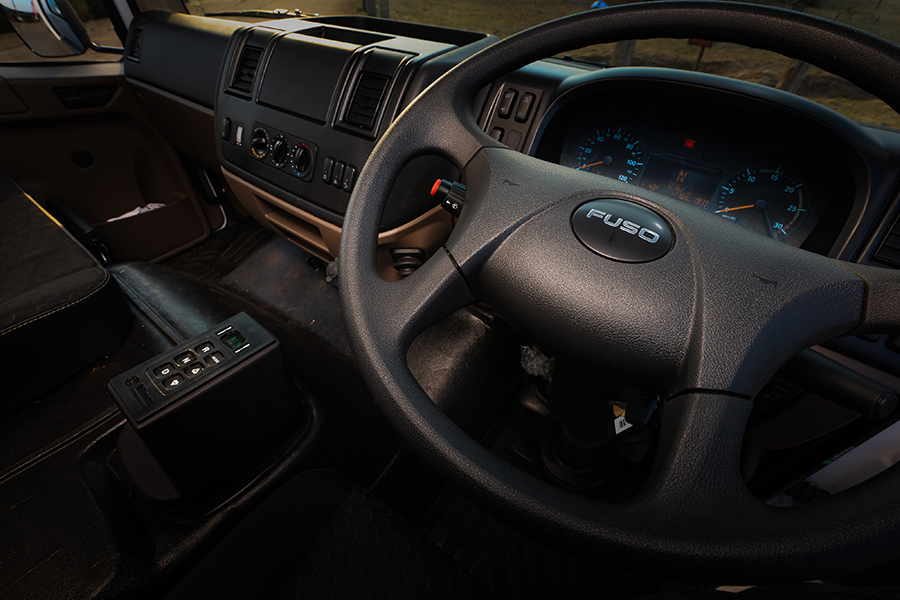That the supply chain is always a good indicator of the health of an industry is not farfetched. If sales of construction vehicles are anything to go by, then it corroborates the sentiment that there is a noticeable recovery in the South African construction sector. Speaking to Quarrying Africa on the sidelines of the recent Daimler Truck Experience event, Maretha Gerber, President and Group CEO of DTSA, noted an uptick in construction vehicle sales this year.
In fact, she says, from a percentage point of view, the construction vehicles market is enjoying more significant growth than the long-haul truck market, although this is coming from a very low base, given the depressed nature of the construction sector in the past few years.
“The uptick in construction vehicle sales this year can be attributed to the visible green shoots in the construction sector. Having endured depressed market conditions in the past few years, we are seeing a renewed focus on infrastructure investment by the government. While there is a long way to go before we start seeing the full effects of the proposed historic R1,3-trillion infrastructure budget, we have seen some key projects coming to market, notably in KwaZulu-Natal,” says Gerber.
While there is a general industry concern around the slow rollout of infrastructure projects, Gerber says it is encouraging to see some meaningful projects already coming to market, especially road and rail projects. For example, Infrastructure South Africa is preparing 34 projects valued at R259-billion to come to market within the next 12-18 months, which include hospital expansions, water programmes and rail projects such as the R9,4-billion Project uKuvusela.
Olaf Petersen, Vice President for Sales and Marketing at DTSA, says the Government of National Unity (GNU) has reiterated a clear plan for infrastructure development to stimulate economic growth. “It is encouraging to see areas such as KwaZulu-Natal and the Western Cape enjoying significant construction activity. There is also an indication that some new contracts are being awarded, but it will take a bit of time for these projects to get going due to the time needed for contractors to mobilise to sites,” says Petersen.

Translating into sales
The improved market conditions in the construction sector have definitely translated into a marked increase in construction vehicle sales, confirms Gerber, who says that the FUSO FJ range has particularly enjoyed the lion’s share of this sales growth.
“Although we have seen strong interest in our Mercedes-Benz Arocs range, the main sales driver in our construction range remains the FUSO FJ series, particularly in the 16-26 tonnes gross vehicle mass (GVM) category,” says Gerber, adding that the FJ range has built a strong reputation for reliability and fuel-efficiency, taking DTSA to the next level within the construction market.
The top performing models, says Petersen, are the FUSO FJ26-280C HUB and the FJ26-280C HYP. A key selling point of the FJ range is the bodybuilder-friendliness of the vehicles. The FJ26-280C HYP, for example, is available with both the engine Power Take Off (PTO) and a transmission PTO, allowing customers the flexibility to either fit a mixer or tipper body when taking delivery of the vehicle.
Efficiency, a major parameter in construction customers’ buying decisions, is another key competitive edge of the FUSO FJ offering. The FJ26-280C HYP, for example, is specifically fitted with hypoid rear axles (single reduction axles), contributing extensively to low fuel consumption, and reducing the tare weight of the vehicle. This is to ensure that the vehicle can accommodate a 6 m³ concrete mixer and still comply with the permissible axle loads.
The FJ26-280C HYP is powered by the 6S20 6,4-litre direct-injection engine producing 205 kW of power at 2 200 rpm delivering high torque (1 100 Nm between 1 200 rpm to 1 500 rpm) over a wide range of engine speeds and is paired with the G131 nine-speed transmission with crawler gear.
“We are glad to announce that customers now have an option for a six-speed Allison automatic transmission, which speaks directly to the needs of the stop-start operations synonymous with construction,” says Petersen. An automatic transmission is ideal for stop-start applications because it eliminates the need for constant clutch use, preventing stalls and allowing for smoother, less stressful driving.

New automatic transmission
In response to the increasing customer demand for automatic transmission, DTSA has introduced the Allison transmission on the FUSO FJ range. Initially, explains Petersen, the company has brought the six-speed Allison 3000, which is ideally suited for various applications such as distribution, firefighting, waste collection and construction.
This will be followed by the six-speed Allison 3500, which will become available early next year, specifically for the three-axle FJ models in the 26-t GVM segment. While it can be deployed across applications, Petersen says the Allison 3500 will be more suited for heavy tipper operations, for example, in heavy construction and mining applications.
Commenting on the benefits of the automatic transmission, Petersen says productivity is maximised through uninterrupted power, ensuring consistent output even under demanding conditions. Faster acceleration combined with smooth gear shifts enhances operational fluidity, while increased efficiency allows for more loads, stops and tasks to be completed within shorter timeframes.
Optimised performance supports heavy-duty workloads, and the inclusion of Downhill Control Mode not only improves safety but also reduces brake wear, contributing to long-term reliability and cost-effectiveness.
Manoeuvrability is enhanced through superior traction, allowing confident navigation across soft or uneven terrain. Excellent gradeability ensures reliable performance on steep inclines, while consistent power delivery improves handling and control, making operations smoother and more responsive in challenging environments.
“Uptime is significantly improved through the use of a torque converter, eliminating the need for clutch maintenance and reducing downtime. Smooth driveline operation provides added protection to key components, while durable parts contribute to lower overall maintenance requirements, ensuring reliable performance and extended service intervals,” explains Petersen.

Driver impact is significantly reduced through the ease of use offered by a fully automatic transmission, allowing operators to focus more on the task at hand. Comfortable operation reduces fatigue during long shifts, contributing to better wellbeing and productivity. By enhancing the overall driving experience, these features support driver retention, while minimising distractions from gear changes helps maintain sharper focus and safer operation.
Wider applications are supported by the constant drive PTO, enabling pump-and-roll functionality for specialised operations. This feature is particularly valuable for construction of water tankers and wildland firefighting, where continuous movement and simultaneous pumping are essential for efficiency and safety in dynamic environments.

State of market
Commenting on the state of the overall commercial vehicle market this year, Gerber says while the market is generally doing well from a sales point of view, it is not matching the historic levels experienced in the past few years. The increased competition in the sector, she says, affords brands such as DTSA to refocus on “what is important.”
“In a buoyant market, companies tend to focus on sales and not necessarily the full value chain. In our case, we have realised the need to readjust our focus on our core strength, which is the value chain, not just the product. Our mission is not only to offer a high-quality product, which we are definitely known for, but also to deliver exceptional service and build long-lasting relationships,” concludes Gerber.






